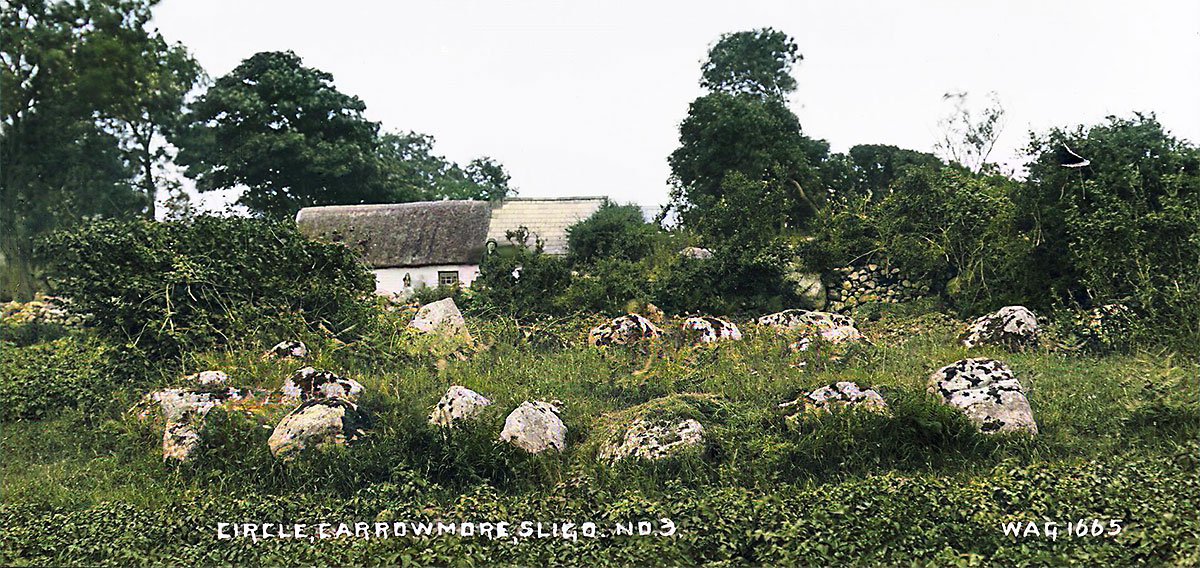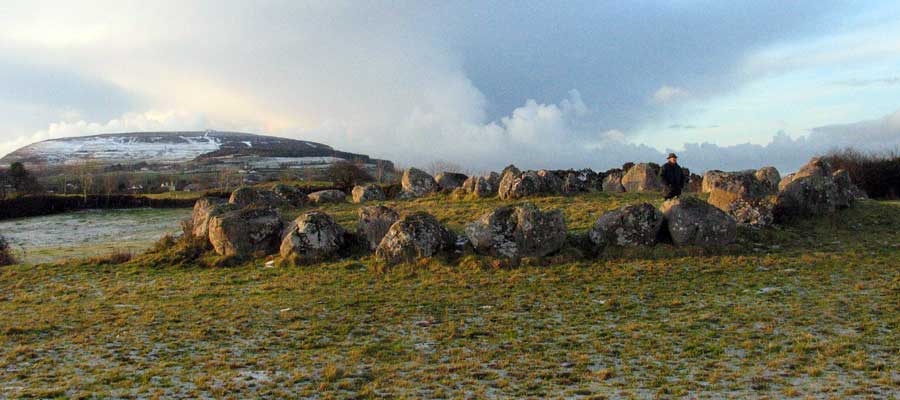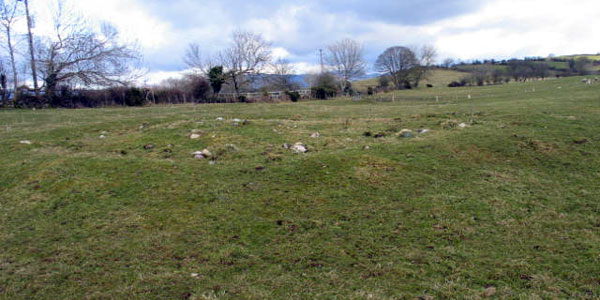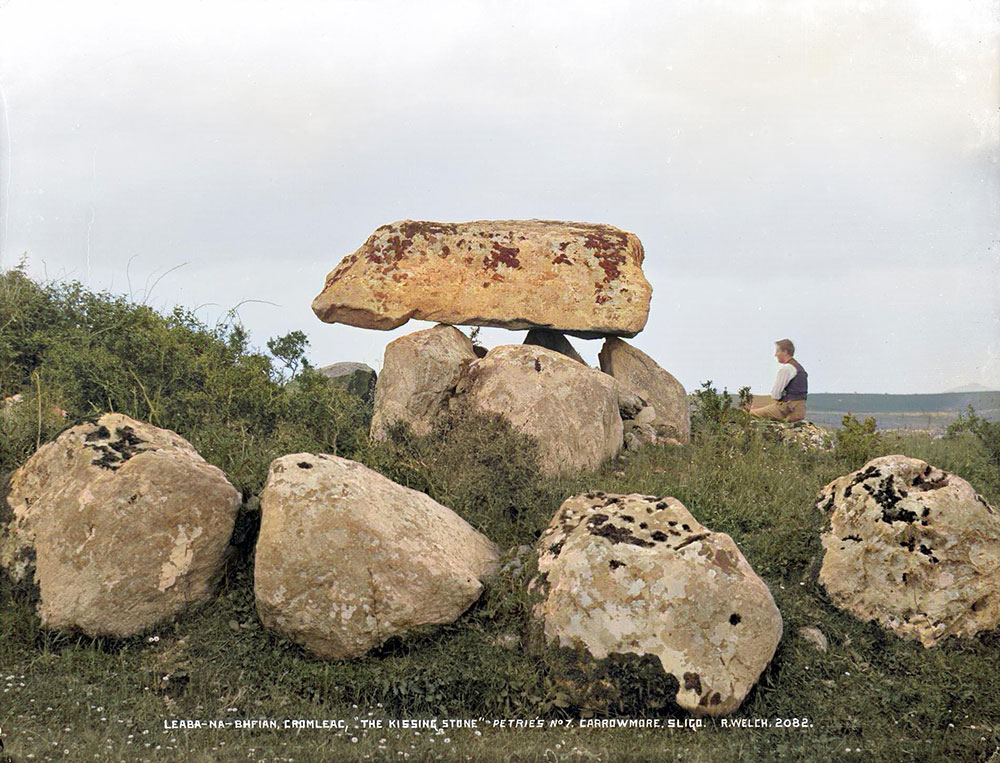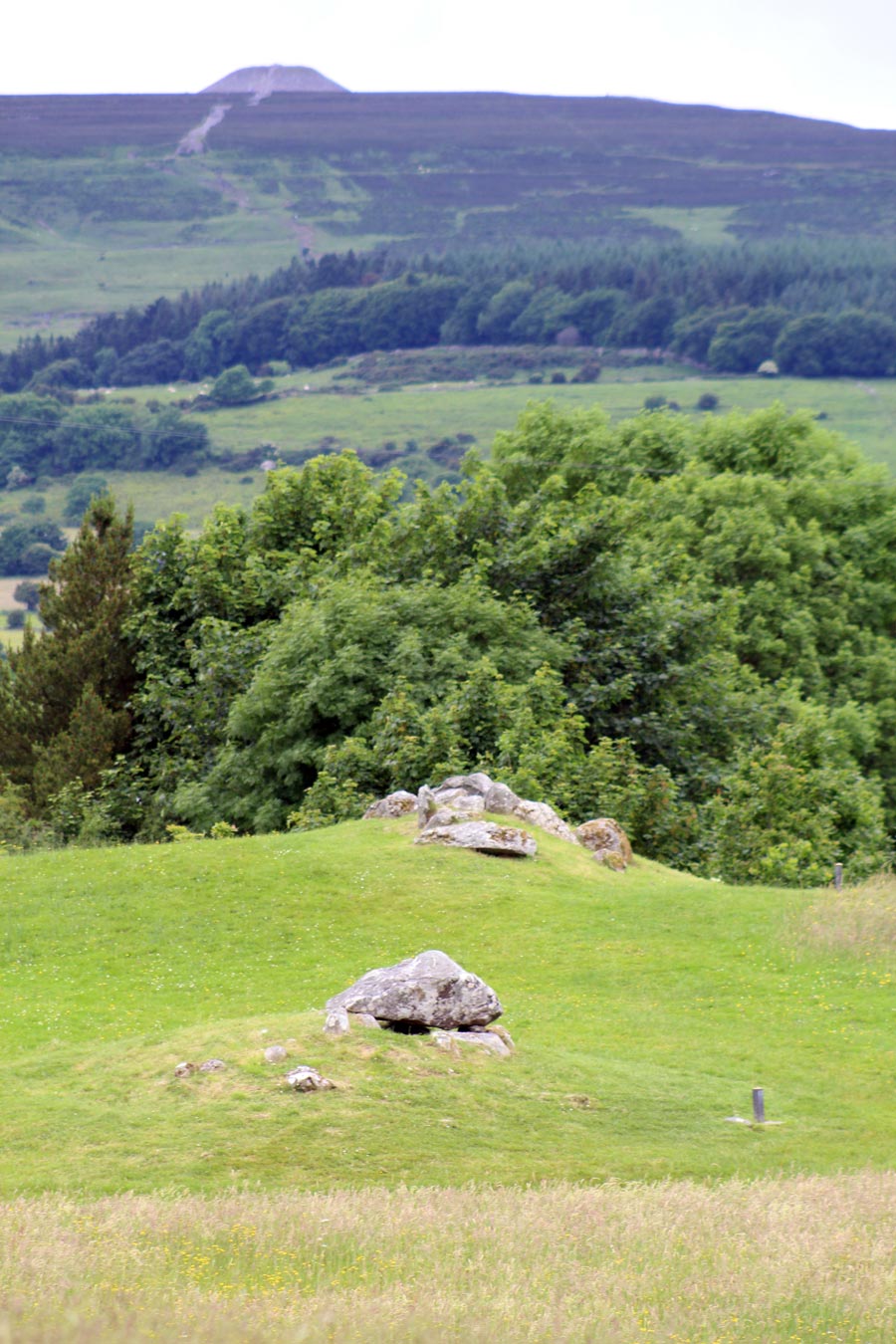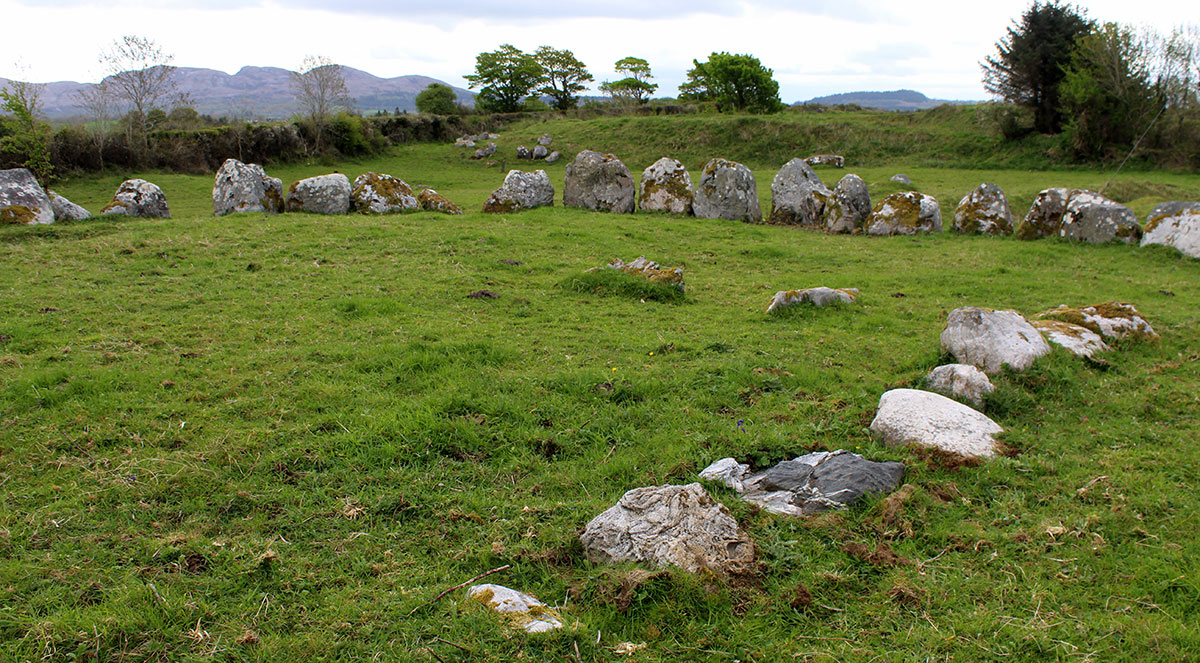Burials at Carrowmore
A primary function of the monuments at Carrowmore was to house the cremated remains of certain special or specific individuals from the neolithic farming community, who were buried in comunal chambers or stone wombs. All of the monuments at Carrowmore which have been excavated have shown evidence of cremated human bone, in spite the activities of Roger Walker, who cleared out many of the burial chambers between 1825 and 1850. All of the early reports of digs and land clearance at Carrowmore refer to burials and 'calcified' human remains.
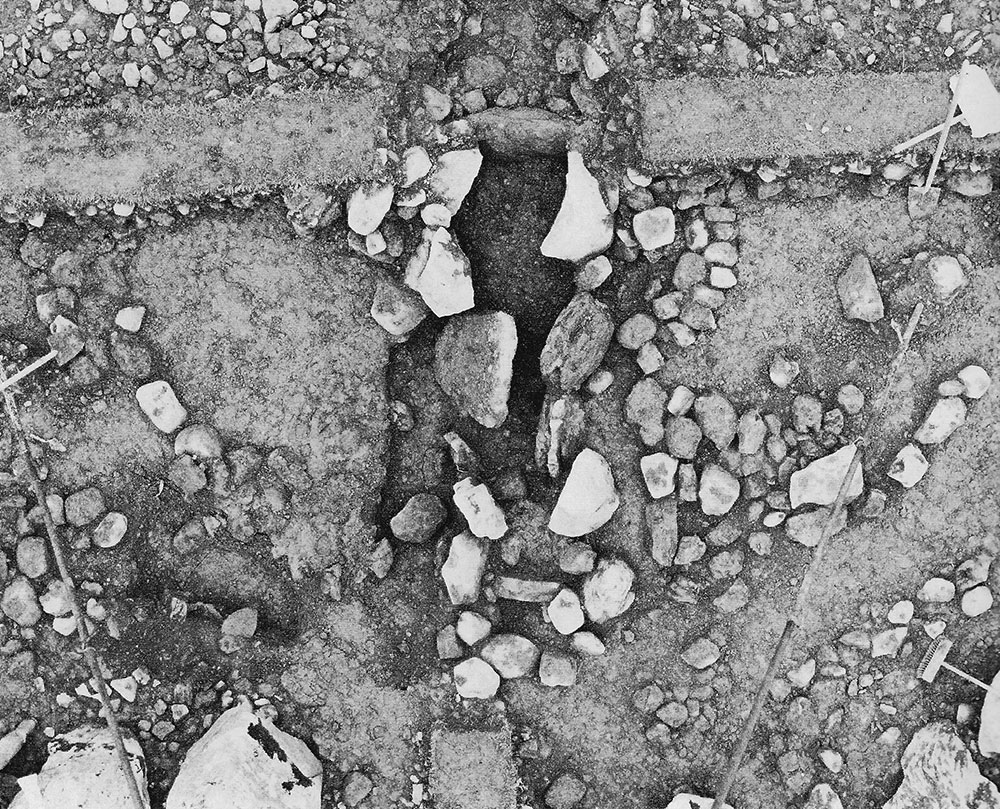
The cremated remains were generally found buried in the chambers, but also sometimes in secondary smaller chambers or cists, sometimes mixed with quantities of animal bone, broken quartz and sea-shells. Many of the finds from Carrowmore—pottery, deer antler pins and pendants—are heat damaged, and so would have been personal items included with the deceaced in the cremation pyres.
The type of items found at Carrowmore were originally used to classify the monuments as passage graves, as they do not resemble the classic later cairn-covered complex chambers. Typical finds were Carrowkeel ware, a type of coarse pottery first discovered in Carrowkeel in 1911; pins or wands carved from the antler of red deer or sometimes bone; stone and clay beads and pendants and fragments of white quartz.
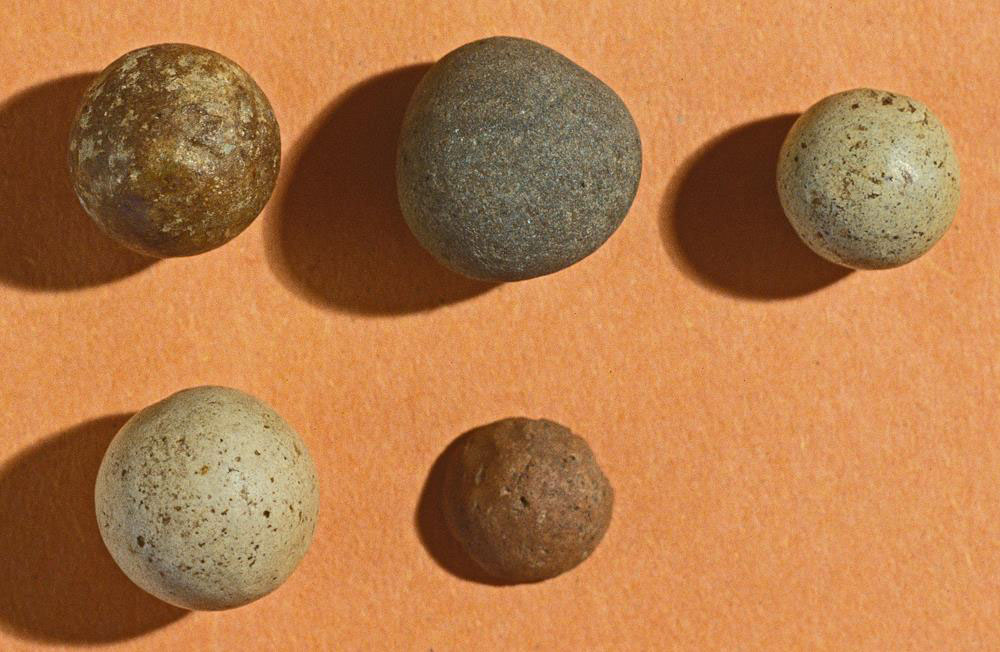
Circle 3
The largest amount of cremated human remains was found in the chamber of Carrowmore 3, where more than thirty-two kilograms of cremated bone is recorded as having been found. This may represent as many as fifty individuals.
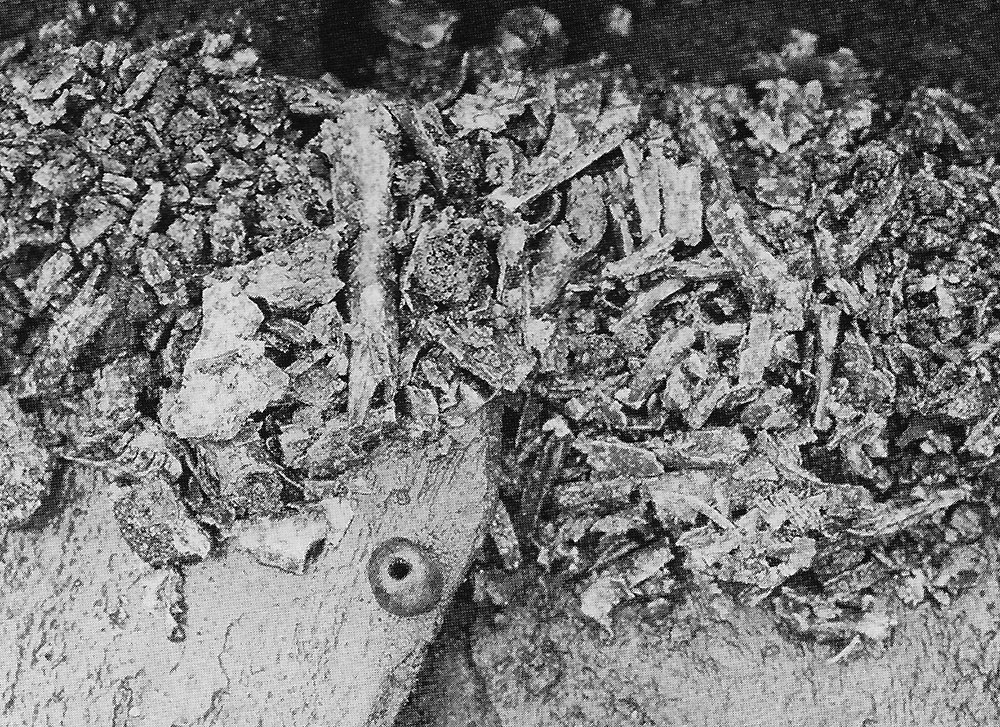
Two small secondary cists (small stone chambers) outside the main chamber show that the chamber was never covered by a cairn. These cists were missed by Walker and remained undisturbed until the Swedish excavations.
The Kissing Stone had scatters of cremated remains found both within and outside the chamber. Much of the remains were spread about in secondary positions after the earlier diggings of Roger Walker in the 1840's and Wood-Martin in the 1880's.
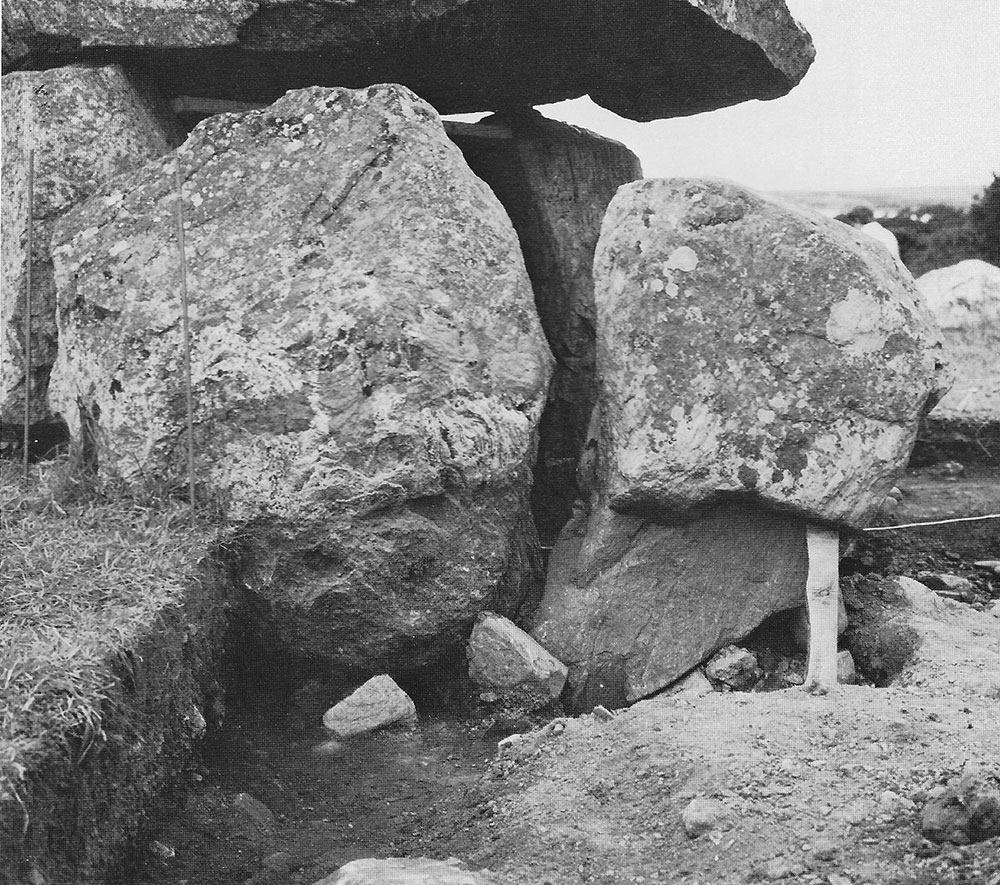
Circle 26, excavated in 1978, proved to have very few neolithic remains, having been re-used in the Bronze and Iron age. About 1.5 kilograms of cerials—barley, rye and oats—were found, and have been dated to 530 BC. A young woman aged around twenty was buried along with a foetus around 90 AD.
Burenhult, the leader of the excavation team suggested that the individual monuments may have been used by different families, much the same way that a family will take a plot or communal grave in a cemetary today. However, new studies on the burials at Carrowkeel to the south of Carrowmore seem to indicate that this is not the case.
The interior had evidently contained several kistvaens, or cromleacs, of which traces are still visible. An excavation into what was apparently the site of the central chamber showed that the interment had been greatly disturbed. One flag only of the original flooring was left in situ, but the largest collection of uncalcined bones discovered in Carrowmore was here exhumed.
Excavations were made at three other places within the enclosure, but nothing of interest was observable.
- Wood-Martin 1888..
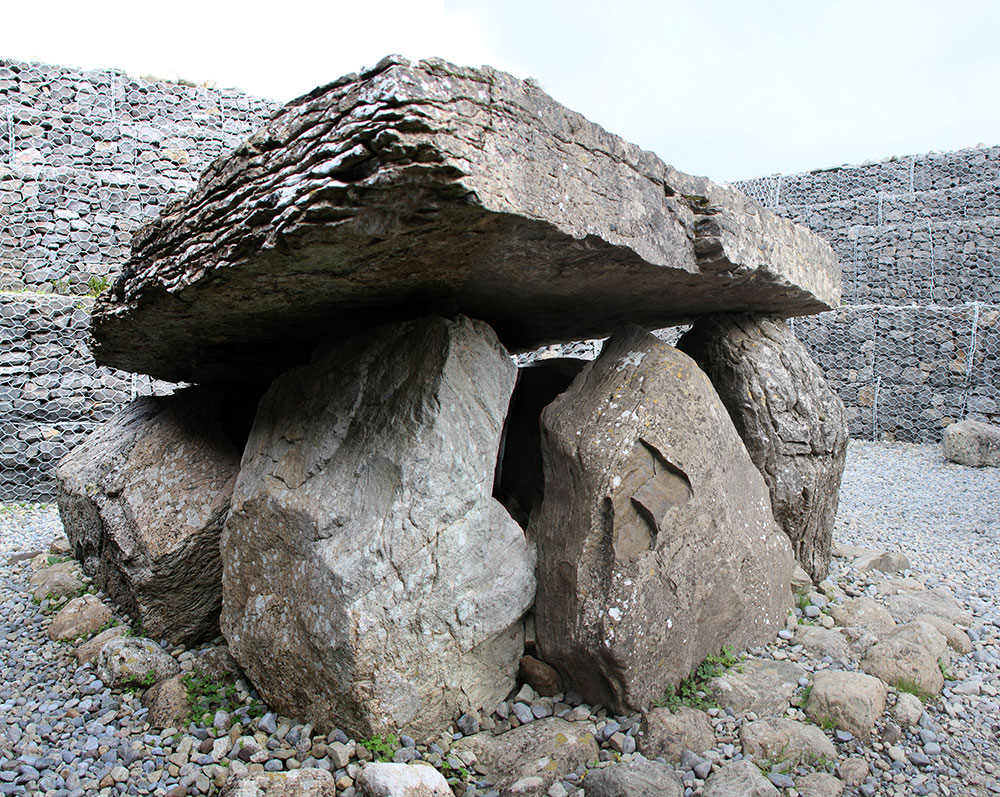
The reports listed with each site are taken from Borlase's Dolmens of Ireland, which lists the finds from Wood-Martin's excavations, are given on individual monument pages. The human remains from Carrowmore, along with the majority of the finds, are kept in the National museum, Kildare St, Dublin.

